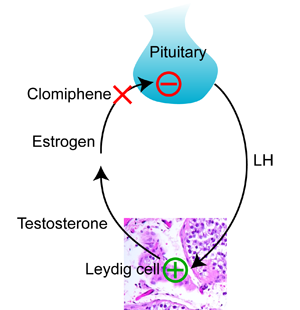By Jim Hotaling, M.D.
Gawker recently reported on an article in the scientific journal Human Reproduction that found sperm numbers and shape to worsen in France during a 16 year period. Studies that claim sperm are declining worldwide have been published for at least the last 20 years. If the trend is true, one guess for its cause was suggested by the Danish scientist Niels Skakkebaek, who argues that chemicals in materials such as plastics act as synthetic hormones that interrupt a man’s own internal natural hormones.
The Human Reproduction article is well designed, studying a very large group of 26,609 men from infertility clinics in France from 1989 to 2005. Each man had two semen analyses, which adds to the strength of the paper as sperm counts change much even from day to day. The scientists concluded that sperm count decreased 1.9% per year in France during the time period of the study.
Before jumping to the conclusion that the fertility of French men is dipping, there are some important limitations of the study. To their credit, the scientists state most of them clearly in their paper. The first is that the scientists studied men showing up in fertility clinics. These men as a group are probably different that the average guy in France. Second, the men got older during the study. While the age increase was small, 34.2 to 35.9 years, and may not mean much, the deCODE study suggests that changes in sperm may start early in a man’s life. Third, giving a sample in an fertility lab may not be the same as when it’s delivered naturally.
This study probably isn’t great cause for concern that sperm are on a steep decline in France. Even if the numbers are going down a bit, there’s still plenty of sperm in these men to do the job.
With the suspension of Cincinnati Reds pitcher Edinson Volquez for performance enhancing drug use and a swirl of rumors that the agent involved was clomiphene (also known as Clomid,) I thought it timely to write about how clomiphene works and how it’s used. From what I read on the internets, there is an enormous amount of misinformation floating around out there.
To understand how clomiphene works, you need to know how the pituitary controls the making of testosterone in the testis. Testosterone is made by Leydig cells in the testis, which I explained in my last post. The pituitary releases a hormone called luteinizing hormone (“LH”) that stimulates the Leydig cells to make testosterone. Testosterone is converted to the female hormone estrogen, (which I also explained in my last post,) and estrogen tells the pituitary to stop making more LH. This kind of negative feedback system is common when it comes to how hormones work. It’s just like a thermostat and heater. As the room gets warmer, the thermostat sends less electricity to the heater. When the room gets colder, the thermostat sends more electricity to the heater.
Clomiphene works by blocking estrogen at the pituitary. The pituitary sees less estrogen, and makes more LH. More LH means that the Leydig cells in the testis make more testosterone.
As I explained in my last post, giving testosterone to a man does just the opposite. The pituitary thinks that the testis is making plenty of testosterone, and LH falls. As a result, the testis stops making testosterone, and the usually high levels of testosterone in the testis fall to the lower level in the blood.
So clomiphene is a way to increase testosterone in the blood and the testis at the same time. It preserves testis size and function while increasing blood testosterone.
Unfortunately, clomiphene is not FDA approved for use in the male. Like most of the medications that we use to treat male fertility, the pharmaceutical company that originally sought approval by the FDA did it for women. Clomiphene is now generic, and it’s unlikely that anyone will pony up the hundreds of millions of dollars necessary to get it approved for the male. That’s the bad news. The good news is that it means that this medication is fairly inexpensive, cheaper than most forms of prescription testosterone. Can a doctor prescribe clomiphene for a man? Yes. It’s “off label”, meaning that it’s not FDA approved for use in men.
As a medication, clomiphene is usually well tolerated by men. In my experience, most patients don’t feel anything as their testosterone rises. Those that do feel an increase in energy, sex drive, and muscle mass, especially if they work out. Very rarely I’ve had patients report that they feel too aggressive, or too angry. Very very rarely (twice in the last 20 years) I’ve had patients report visual changes. That’s worrisome, as the pituitary is near the optic nerve in the brain, and visual changes suggests that the pituitary may be changing in size. Because the skull is a closed space, it’s alarming if anything in the brain changes in size. In the last twenty years, I’ve also had two patients who had breast enlargement (called “gynecomastia”) while using clomiphene. Needless to say, for any of these problematic side effects, the clomiphene is discontinued.
So that’s the story with clomiphene. It can be used in the male, either for fertility or low testosterone levels. It’s an off label prescription drug. It works, and is usually well tolerated by men who take it.

